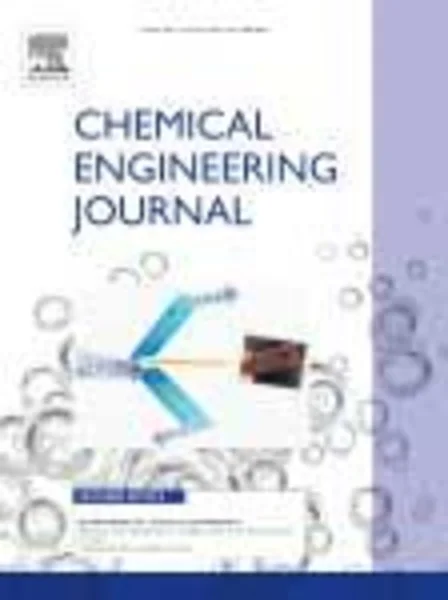-
treatment of mixed chemical wastewater and the agglomeration mechanism via an internal electrolysis filter
جزئیات بیشتر مقاله- تاریخ ارائه: 1392/01/01
- تاریخ انتشار در تی پی بین: 1392/01/01
- تعداد بازدید: 625
- تعداد پرسش و پاسخ ها: 0
- شماره تماس دبیرخانه رویداد: -
an actual mixed chemical wastewater was treated using internal electrolysis. a significant effect was observed, with an average chemical oxygen demand removal efficiency of 20%, a bod5/cod enhancement efficiency of 80%, and an acute biotoxicity removal efficiency of 60%. these results show that the technology can be efficiently applied to refractory wastewater. the fillings were agglomerated after 50 days of operation. the pressure drop of the reaction sharply increased from 70 cm h2o to more than 100 cm h2o indicating that the fillings were agglomerated, and the performances of the process were simultaneously reduced. various techniques were used for characterization to determine the mechanism of agglomeration. scanning electron microscopy (sem) shows granular matters on the surface of the fillings, which induced agglomeration. x-ray diffraction (xrd) and x-ray photoelectron spectroscopy (xps) results indicate that the granular matters were ferric hydroxide [fe(oh)3] particles, which exhibited the amorphous crystal structure. xps and fourier transform infrared spectroscopy (ftir) results indicate that the adsorption during the internal electrolysis process was via chemical adsorption, and fe(oh)3 could easily adsorb organic molecules containing electron-donating groups such as –conh2, –cooh, and –ch3. the deposition of fe(oh)3 on the surface of the fillings and its subsequent adsorption of organic species were the primary cause of agglomeration in the internal electrolysis technology.
مقالات جدیدترین رویدادها
-
استفاده از تحلیل اهمیت-عملکرد در ارائه الگوی مدیریت خلاقیت سازمانی و ارائه راهکار جهت بهبود
-
بررسی تاثیر ارزش وجوه نقد مازاد بر ساختار سرمایه شرکت های پذیرفته شده در بورس اوراق بهادار تهران
-
بررسی تأثیر سطح افشای ریسک بر قرارداد بدهی شرکت های پذیرفته شده در بورس اوراق بهادار تهران
-
بررسی تأثیر رتبه بندی اعتباری مبتنی بر مدل امتیاز بازار نوظهور بر نقد شوندگی سهام با تأکید بر خصوصی سازی شرکت ها
-
تأثیر آمیخته بازاریابی پوشاک ایرانی بر تصویر ذهنی مشتری پوشاک ایرانی (هاکوپیان)
-
ارتقای تعاملات اجتماعی در مجتمع های مسکونی، در جهت افزایش حس تعلق به مکان: ارائه راهکارهای طراحی معماری
-
بررسی تاثیر رنگ در محیط آموزشی برای کودکان مبتلا به اختلالات اوتیسم
-
تاثیر نور در فضاهای امن شهری
-
ژئوشیمی و محیط تکتونیکی لامپروفیرها و آندزی بازالت – بازالت های جنوب – غرب سلماس
-
معماری پایدار با رویکرد بومی سازی و تاثیر اقلیم بر آن (نمونه موردی سیستان)
مقالات جدیدترین ژورنال ها
-
مدیریت و بررسی افسردگی دانش آموزان دختر مقطع متوسطه دوم در دروان کرونا در شهرستان دزفول
-
مدیریت و بررسی خرد سیاسی در اندیشه ی فردوسی در ادب ایران
-
واکاوی و مدیریت توصیفی قلمدان(جاکلیدی)ضریح در موزه آستان قدس رضوی
-
بررسی تاثیر خلاقیت، دانش و انگیزه کارکنان بر پیشنهادات نوآورانه کارکنان ( مورد مطالعه: هتل های 3 و 4 ستاره استان کرمان)
-
بررسی تاثیر کیفیت سیستم های اطلاعاتی بر تصمیم گیری موفق در شرکتهای تولیدی استان اصفهان (مورد مطالعه: مدیران شرکتهای تولیدی استان اصفهان)
-
اثربخشی روایت درمانی بر خودکارآمدی ادراک شده دانش آموزان دختر مبتلا به چاقی
-
انتشار تصاویر کودکان در فضای مجازی و تأثیر آن بر شخصیت سازی پیش از بلوغ ایشان، در پرتو حقوق ایران و مقررات بین المللی
-
واکاوی اسقاط خیار غَبن و تأثیر آن در سقوط میزان غَبن فاحش و اَفحَش
-
داوری در طلاق
-
sociological study of social problems of afghan refugees in yasooj city in 2015




سوال خود را در مورد این مقاله مطرح نمایید :